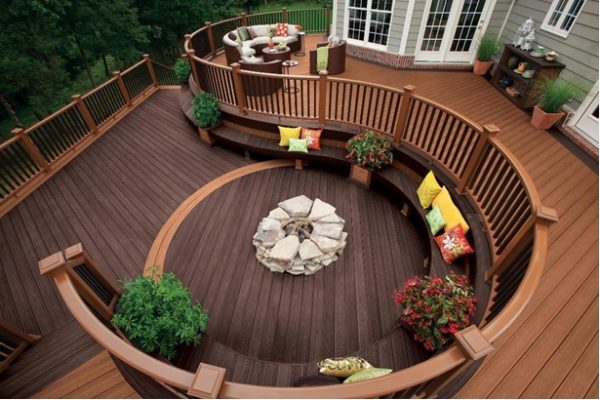
Building a deck on or around your home can greatly enhance you and your family’s experience of your home. For centuries decks have been built or added onto homes to give the owner the ultimate joy of enjoying the outdoor surroundings around their home. For homeowners, adding a deck can also have the advantages of improving your home’s market performance and help increase the market value of your home. And for owners, who lease their homes to renters, can use a nicely built and attractive deck to help increase and leverage the monthly rent to their tenants. But like anything else, when starting the process of building a deck, there are several different treated woods and natural woods to choose from, each claiming to have the advantage. So which is better? Pressure treated lumber, or naturally occurring lumber.
1) Pressure Treated Lumber
If finding a durable material to construct your deck at a minimal cost is what your budget entails, pressure treated lumber should be at the top of your list. Pressure treated lumber is wood that has been chemically treated to preserve itself in the harshest conditions. Not only is it inexpensive, but it is readily available at just about any lumber yard or home improvement store and most producers of the material attach favorable warranties to the lifetime of the wood. However, it should be noted that pressure treated lumber can be dimensionally unstable, giving it a tendency to crack, split. It should also be noted that the material has a tendency to retain moisture out of the shop. When that moisture dries up, the wood will shrink, twist and warp. If you plan on purchasing pressure treated lumber, make sure to buy the “premium” or “select” boards which will offer protection against cracked, twisted, and warped wood.
2) Natural Redwood and Cedar
For many architects and contractors, there is no other way to go than the traditional way of using naturally occurring redwood and cedar. Naturally occurring woods have a more natural rich color tied to them because they do not contain any harsh chemicals. Not all natural woods are equal though. When building a deck, to optimize the level of resistance to the natural elements, it is key to have the hardest and most resistant wood possible. When a tree is chopped down and cut into lumber, the densest wood is found in the center of the tree and is known as heartwood. When it comes to using redwood or cedar for your deck, it would be wise to make sure you get your hands on lumber that contains a high level of heartwood with a low level of knots according to your budget. The real benefit of redwood and cedar is that it is extremely strong, can resist natural decay for many years, and is almost completely resistant to moisture.
So which type of wood is the better wood to construct a deck with? The most benefit will generally be handed to the naturally occurring woods over the pressure treated lumber. However, natural woods can cost up to three times as much as pressure treated lumber. What should really determine your decision when constructing a deck is how much moisture your region really gets, and what kind of use and abuse is your deck likely to experience throughout the many years you have to enjoy it.
Have a deck and want to add more seating without taking away lots of walk space? Patio bar stools are a great answer to provide more seating on your deck, while optimizing the total space and comfort of your deck.





